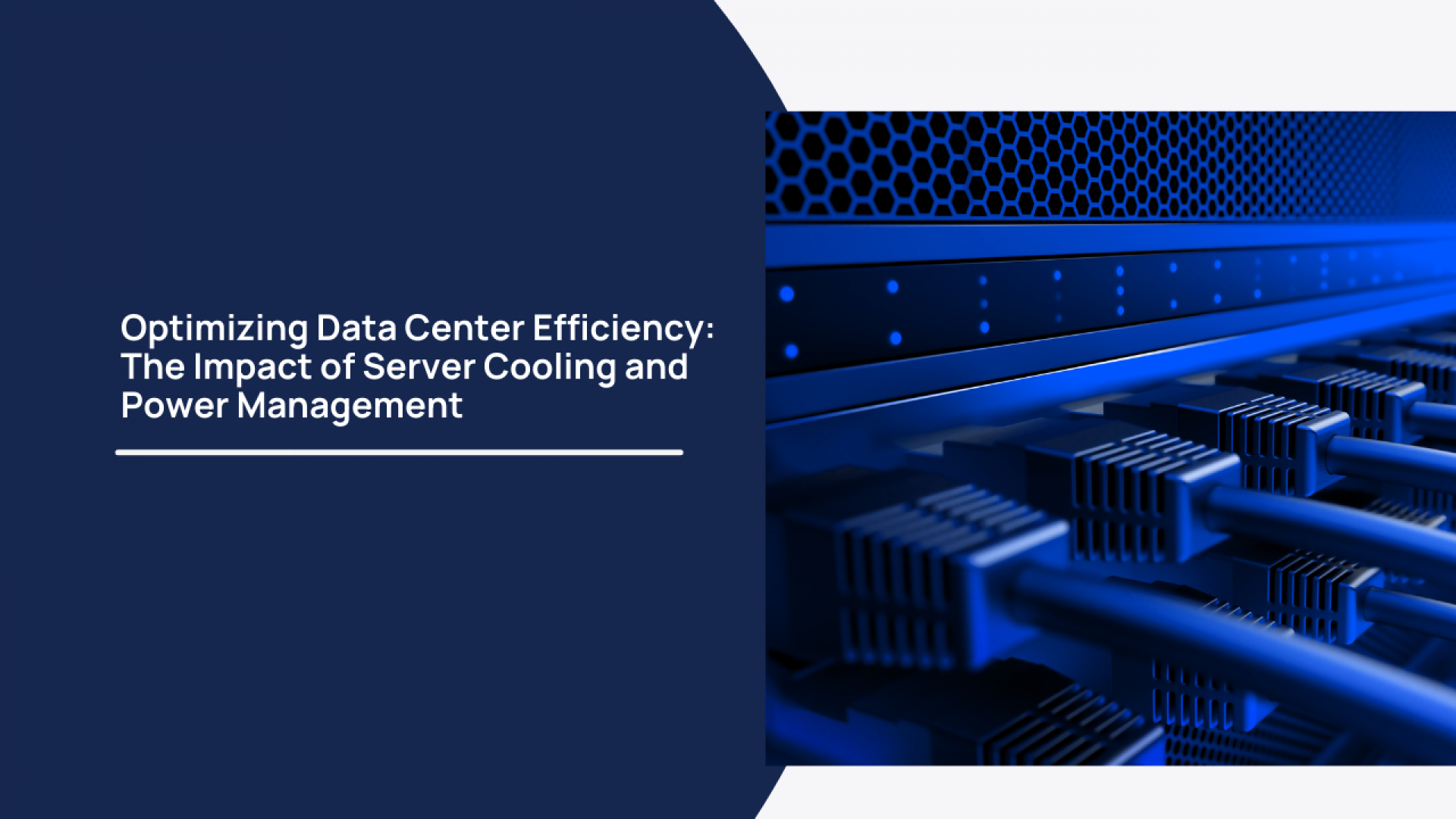
Efficiency is paramount in data centers, driving cost reduction, environmental responsibility, and operational reliability. Key to this are server cooling and power management. This article delves into their significance, impact on performance, and optimization strategies. By addressing these aspects, businesses can bolster efficiency, mitigate operational risks, and align with sustainability goals in the ever-evolving data management landscape. Optimizing cooling and power management not only enhances performance but also contributes to cost savings and environmental stewardship. In a rapidly changing technological landscape, prioritizing efficiency in these critical areas ensures that data centers remain agile, resilient, and environmentally conscious.
The Importance of Server Cooling:
Servers generate substantial heat during data processing and computations. Without adequate cooling, this heat can cause equipment failures, performance degradation, and higher energy consumption. Effective server cooling is vital to maintain optimal temperatures and extend hardware lifespan. By dissipating heat efficiently, cooling mechanisms prevent overheating, ensuring reliable server operation. Proper cooling also minimizes the risk of downtime and costly repairs associated with heat-related failures. Investing in robust cooling solutions not only enhances server performance but also contributes to energy efficiency and overall operational stability, safeguarding the integrity of critical data and infrastructure.
Impact of inefficient cooling
Inadequate cooling systems can have detrimental effects on data center operations. Excessive heat can induce thermal throttling, diminishing server performance and reliability. Moreover, overcooling or undercooling leads to energy wastage and higher operational expenses. Furthermore, insufficient cooling may result in hot spots within the data center, escalating the likelihood of equipment malfunctions and downtime. To mitigate these risks, it's imperative for data center managers to implement efficient cooling solutions that maintain optimal temperatures, minimize energy consumption, and ensure the uninterrupted operation of critical infrastructure.
Strategies for Server Cooling Optimization:
To optimize server cooling and improve data center efficiency, businesses can implement various strategies:
Hot Aisle/Cold Aisle Configuration: Organizing server racks in a hot aisle/cold aisle layout helps segregate hot and cold air streams, minimizing the mixing of hot and cold air and improving cooling efficiency.
Containment Systems: Installing containment systems such as aisle containment or rack-level enclosures can further isolate hot and cold airflows, enhancing cooling effectiveness and reducing energy consumption.
Precision Air Conditioning: Deploying precision air conditioning units allows for more precise control over temperature and humidity levels within the data center, ensuring optimal conditions for server operation while minimizing energy usage.
Free Cooling: Leveraging free cooling techniques, such as utilizing outside air or evaporative cooling, can significantly reduce energy consumption by utilizing natural cooling methods whenever ambient conditions permit.
Temperature Monitoring and Management: Implementing temperature monitoring systems enables real-time tracking of server temperatures, allowing for proactive adjustments to cooling systems and preventing overheating events.
The Role of Power Management:
Beyond cooling, proficient power management is pivotal for maximizing data center efficiency. Power consumption impacts not just operational expenses but also environmental sustainability, necessitating strategies to curtail usage without sacrificing performance. Implementing dynamic power allocation mechanisms, energy-efficient hardware, and renewable energy integration are crucial steps. By accurately assessing power needs and optimizing distribution, businesses can mitigate waste and minimize costs. Moreover, leveraging technologies like virtualization and power monitoring enables organizations to optimize power usage in real-time, ensuring efficient operations. Prioritizing effective power management alongside cooling measures is imperative for data centers to achieve cost savings, environmental responsibility, and operational excellence.
Impact of Inefficient Power Management:
Ineffective power management practices contribute to energy wastage, elevated operational expenses, and a larger carbon footprint. Overprovisioning power capacity often leads to underutilization and inefficiency, as resources remain underused. Conversely, insufficient power provisioning may result in power shortages and performance degradation during peak demand periods, undermining data center reliability. To address these challenges, data center operators must adopt proactive power management strategies. This includes accurately assessing power requirements, optimizing power distribution, and implementing dynamic power allocation mechanisms. By aligning power provisioning with actual demand and leveraging efficient power management solutions, businesses can minimize waste, reduce costs, and mitigate environmental impact while maintaining reliable data center operations. The above mentioned factors are very important and Comprint has a collection of Rack Servers that are efficient in power management.
Strategies for Power Management Optimization:
To optimize power management and enhance data center efficiency, businesses can implement the following strategies:
Energy-Efficient Hardware: Investing in energy-efficient server hardware, such as low-power processors and power-efficient components, can significantly reduce overall power consumption without sacrificing performance.
Virtualization: Server virtualization allows for the consolidation of multiple virtual servers onto a single physical server, reducing the total number of physical servers required and thereby lowering power consumption.
Dynamic Power Management: Implementing dynamic power management techniques enables servers to adjust power usage based on workload demands, optimizing energy efficiency during periods of low activity.
Power Monitoring and Measurement: Deploying power monitoring tools allows data center operators to track power usage and identify opportunities for optimization, such as identifying underutilized servers or inefficient cooling systems.
Renewable Energy Integration: Incorporating renewable energy sources, such as solar or wind power, into data center operations can reduce reliance on fossil fuels and lower overall carbon emissions.
Conclusion:
In conclusion, maximizing data center efficiency necessitates meticulous focus on both server cooling and power management. Through the adoption of precision cooling, containment systems, virtualization, and the integration of renewable energy sources, organizations can elevate cooling efficiency, curtail energy usage, and diminish environmental footprint. By placing a premium on efficiency in server cooling and power management, enterprises can realize substantial cost reductions, bolster reliability, and play a proactive role in fostering sustainability. By embracing these strategies, businesses not only enhance their operational resilience but also align with broader environmental objectives, paving the way for a more sustainable future in the realm of data management and infrastructure.

Leave a Comment